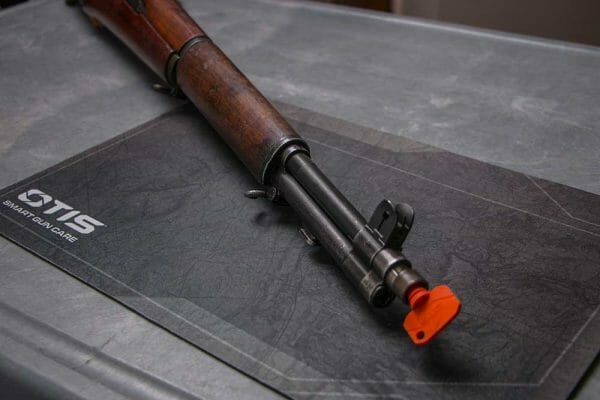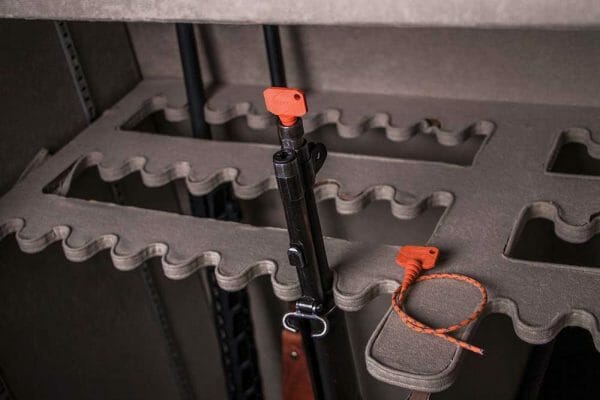
U.S.A. –-(Ammoland.com)- Ever since news broke that hundreds of thousands of WWII-era 1911s and M1 Garands were going to be available through the Civilian Marksmanship Program, firearms enthusiasts have been licking their chops in anticipation.
These firearms have been on loan to the Philippines for decades, but have finally been approved to return to the United States, where we can purchase them through the CMP. As Americans line up for the chance to buy these pieces of military history, it seems like a good time to talk about preserving firearms for long-term storage.
Firearms that see frequent use, should see frequent cleaning as well. But, what about those guns that don’t get a lot, if any, use at all? What special steps should be taken to ensure they are safely stored and not damaged by rust, corrosion or any other nastiness that may lie inside?
Prepare
The first step before putting a gun away for a long winter’s nap is a good, deep cleaning. From a vintage 1911 to great-granddad’s shotgun, the oils, greases, powder, sweat and other debris that a gun accumulates through use can be detrimental to a gun sitting over a long period of time. We need to get all that off before we can add a layer of protectant.
Strip off oil and grease using a solvent, such the Otis Complete Gun Cleaner. Be sure to get all of it from internal parts as well. The same lubricants that help your firearm function and protect it from rust can also be a magnet for dirt, lint and other kinds of debris.
Next, get that barrel and action spotless, especially with older firearms that may have been exposed to corrosive primer compounds. If left behind, these remnants can cause pitting or accelerate corrosion. Otis Surface Prep works well for this task, as it blasts out debris from those hard to reach places such as actions.
This is especially important with black powder firearms. The carbon fouling left behind in black powder guns is hydroscopic and can absorb moisture from the air, enhancing rusting.
Treat
Now that the firearms are completely stripped, it’s time to protect them inside and out. We recommend using a product specifically designed for long-term storage, such as the Long-Term Protectant. This product is designed to displace any moisture and leave a thin, waxy film behind. This essentially seals the metal off from corrosion or damage.
Polymer stocks and grips are durable and corrosion resistant; just make sure that any Long-Term Protectant is also applied to the metal underneath any polymer parts. Moisture trapped under a grip or inside a stock can be a rust zone if not protected.
Wood stocks should also be protected with a wax or polish specifically made for wood. Just as with polymer stocks, be sure to protect any metal underneath a wood stock.
Don’t forget to take care of your optics, either. An Otis Lens Cleaning Kit will help you get all the crud off your riflescope and a good set of lens caps or a scope cover will keep abrasive dust off the lens.
As a last step, insert an Otis Metal Defense Bore Stick. This new set-and-forget device seals off the gun barrel, preventing moisture and debris from getting inside. Made of corrosion-inhibiting VCI, the Metal Defense Bore Stick gives off a gas that displaces oxygen from the barrel, thereby preventing oxidation (rusting) of the metal.
Safe storage
Now that the firearm is cleaned, protected and sealed, you can safely store it. But, how and where you store it can have a huge impact on how well it’s protected from the elements.
Otis always recommends storing firearms under lock and key when not in use. A metal, locking gun cabinet is good, but a strong fire-rated safe is best. No matter which you choose, store any long-term firearms toward the rear so you don’t have to constantly handle them to access other firearms. More on that in a bit.

Humidity control is key. There are a variety of options out there for managing moisture in your safe, from rechargeable dehumidifiers to electric versions that are set and forget. This is a critical step, especially for those who live in humid environments. Placing your gun safe in a part of the house with a fairly constant temperature will also help prevent moisture buildup. Cool, dry basements work best. Garages are usually not very good options, as they have widely varied temperatures and are also easier targets for thieves.
Finally, take care in how you handle your protected firearm. Skin oil can be extremely corrosive, especially to fine blueing. Once you have your firearm ready to store, we advise using a cloth or gloves to handle the firearm. Again, storing the firearm toward the rear of the safe eliminates the need for frequent handling.
Follow up
Once you have a firearm prepared for long-term storage, we recommend an annual cleaning and reapplication of protectants. While the protection should outlast a year, it’s good practice to ensure your investment with a yearly inspection.
Many of us link this inspection to events or dates, such as Independence Day, New Year’s Day, or one of our favorite options: April 19th , the date of the famed “Shot Heard Round the World” that began the American Revolution.
Whatever day you choose, make it a date to pull your treasured firearm from the safe and give it a little TLC. It will pay off as you will get many more years from the gun, and have a great tool or heirloom to pass down to future generations.
About Otis Technology:
Otis Technology is known for manufacturing the most advanced gun cleaning systems and accessories available. The superior Breech-to-Muzzle design with unmatched quality positioned Otis as gun care system of choice with the US Military. Otis Technology is SMART GUN CARE.
